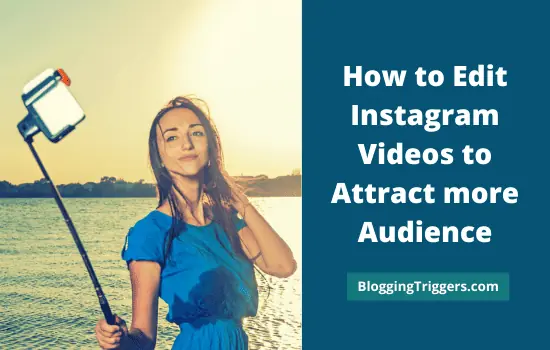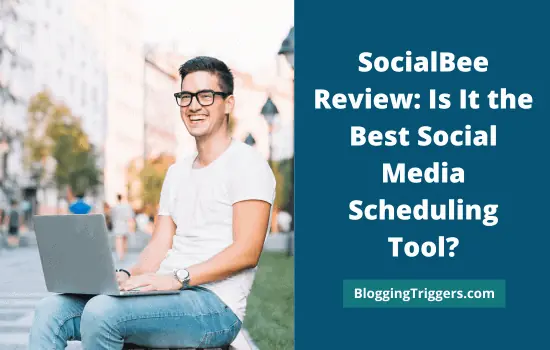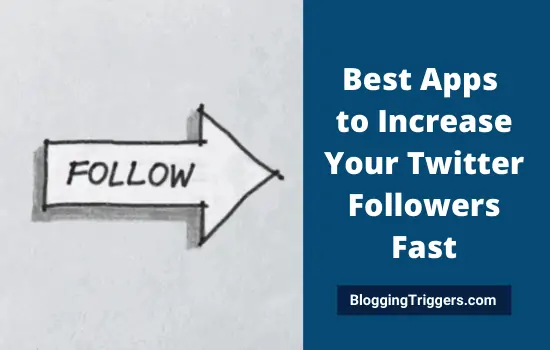
Instagram has become more than just a platform for sharing photos; it’s evolved into a full-fledged multimedia powerhouse. With features like Stories, IGTV, and Reels, video content has become an essential part of any Instagram strategy. Whether you’re an influencer, a small business owner, or someone who wants to capture memorable moments, creating captivating video content can significantly amplify your Instagram game.
However, churning out eye-catching videos isn’t just about hitting the ‘Record’ button and uploading whatever you capture. There’s an art and science to creating Instagram videos that resonate with your audience, and that’s where editing comes in.
In this post, we will walk you through the steps for creating and editing your Instagram videos to perfection.
Table of Contents
- 1 How to Edit Instagram Videos like a Pro?
- 1.1 1. Plan Your Video Content
- 1.2 2. Consider Instagram’s Video Format Specifications
- 1.3 3. Get The Right Equipment And Software
- 1.4 4. Use Quality Sound And Lighting
- 1.5 5. Focus On Storytelling
- 1.6 6. Add Text And Subtitles
- 1.7 7. Experiment With Effects And Transitions
- 1.8 8. Color Grading
- 1.9 9. Optimize For Mobile Viewing
- 1.10 10. Conduct A/B Testing
- 1.11 Wrap Up
How to Edit Instagram Videos like a Pro?
Follow these tips to fine tune your Instagram videos and attract more audience,
1. Plan Your Video Content
Before jumping into the planning or shooting phase, spend some quality time brainstorming ideas. Consider your target audience, the message you want to convey, and how you can stand out in a sea of content. Write down all your ideas, no matter how outlandish they may seem. You never know which seemingly odd idea could become the focal point of your creative vision. This brainstorming phase can guide your storyline, help you pick your video format, and steer you in a particular creative direction.
After all, winging it may work for spontaneous Stories, but if you want your video to have a lasting impact, planning is key. Jot down a list of the main points or scenes you want to include. Think about your video’s message and how each part contributes to it. A well-thought-out storyboard or outline can save you tons of time during both the shooting and editing stages.
2. Consider Instagram’s Video Format Specifications
Instagram has various video formats and time limits for each of its features—main feed, Stories, IGTV, and Reels. Ensure your video adheres to these guidelines.
For instance, Stories should be no longer than 15 seconds, and videos in the main feed can go up to 60 seconds. Knowing these limits will help you plan your content more efficiently.
3. Get The Right Equipment And Software
Before you even think about the video’s content, it’s important to have the right tools at your disposal. Most modern smartphones offer excellent camera capabilities that should suffice for your Instagram video needs. However, if you’re going for a more professional look, consider investing in a good DSLR or mirrorless camera.
Once you’ve shot your video, the next critical step is editing. You’ll want to use software that offers a range of editing features without a steep learning curve. One of the popular choices for editing is a professional video editing software, which supports the commonly used .mp4 format and offers a variety of useful functionalities.
Remember, your software should have capabilities for not just cutting and stitching scenes, but also color correction, adding text overlays, transitions, and even sound editing.
4. Use Quality Sound And Lighting
Your viewers might forgive minor visual imperfections, but bad sound can make your video unbearable to watch. If you’re speaking in the video, consider using a lapel microphone for clearer audio.
Also, good lighting can drastically improve the quality of your video. Natural lighting is often the best, but you can also invest in affordable lighting rigs to enhance your setup.
5. Focus On Storytelling
Storytelling is a crucial element that distinguishes exceptional videos from average ones. Effective storytelling not only holds the viewer’s attention but also provides them with a coherent and memorable experience.
A compelling narrative starts with a strong introduction. Right at the outset, you want to hook your viewers with a riveting visual, an intriguing question, or an emotional element that forces them to invest in your video.
As you transition into the main body of the video, make sure you provide either educational or entertaining content. This is the “meat” of your story where you deliver on the promise or the hook. Be it tutorials, behind-the-scenes looks, or fun skits—this is your opportunity to captivate the audience.
Lastly, don’t forget to wrap up your video with a compelling conclusion. Whether it’s a call-to-action encouraging the viewer to visit your website, make a purchase, or simply like and share the video, the ending should be a natural culmination of your story.
6. Add Text And Subtitles
In today’s fast-paced world, many people watch videos on Instagram without sound. Adding text overlays and subtitles can significantly improve viewer engagement and accessibility. Text can highlight key points or offer supplementary information, making it easier for viewers to follow along or understand the context.
On the other hand, subtitles ensure that your video is accessible to viewers who might be hard-of-hearing or in a setting where they can’t play the video with sound.
Moreover, subtitles can be invaluable if you’re reaching out to a global audience who may not speak your language. Most video editing software provides easy-to-use features for adding text and subtitles. You can often customize the font, size, and color of the text, making sure it matches your video’s aesthetic and doesn’t distract from the main content.
7. Experiment With Effects And Transitions
The use of effects and transitions can add a professional touch to your Instagram videos. While abrupt cuts might work for certain scenes, using a variety of transitions can help maintain a smooth flow and keep your audience engaged. Types of transitions to consider include fades, wipes, and dissolves for softer changes, and cutaways or cut-ins for more dramatic shifts.
Effects can range from slow motion to fast cuts, from filters to animated elements. But a word of caution here: overusing transitions and effects can make your video feel gimmicky or confusing. The key is to maintain a balance. The transitions should serve the story and not just be an aesthetic addition. Start with subtle effects and transitions, and as you get more comfortable, you can experiment with more elaborate options.
8. Color Grading
Often overlooked but incredibly impactful, color grading can significantly influence the mood and emotional impact of your video. Whether you’re going for a bright, upbeat vibe or a moody, dramatic feel, a few tweaks in color can make all the difference. You could start with basic corrections to improve exposure, contrast, and white balance.
From there, you can proceed to more advanced adjustments like tweaking highlights, mid-tones, and shadows or even adding color tints for thematic effects. While some may opt for the preset filters that come with editing software, investing time in learning the basics of color theory can pay off exponentially in terms of video quality.
Whether you’re using simple sliders or diving into more advanced color grading software, the goal is to make your video visually cohesive and emotionally resonant.
9. Optimize For Mobile Viewing
With the vast majority of Instagram users accessing the platform via mobile devices, optimizing your video for mobile viewing is not just an afterthought; it’s a necessity.
The first step in this direction is to ensure that your text overlays, if any, are easily legible on a smaller screen. Fonts that seem readable on a desktop might become blurry or too small to read on mobile. So always double-check text elements by previewing the video on your own device or using software that offers a mobile preview feature.
Another aspect to consider is the framing of your shots. Mobile screens are more restrictive in terms of space, so make sure that important visual elements or subjects are centrally located so they don’t get cut off when viewers watch on their phones.
Additionally, consider the fact that mobile screens have varying aspect ratios and resolutions. While Instagram does a reasonably good job of adapting videos to different screens, you can’t count on the platform to make all the adjustments. Using your editing software, preview how the video looks in common mobile resolutions and make necessary tweaks.
Finally, be conscious of load times. Higher resolution videos, while beautiful, can be a drag on mobile data and take longer to load, potentially turning viewers off before they’ve even watched a single second. Most editing software allows you to choose the output resolution and compression settings.
Aim for a balance between quality and file size to ensure quick loading and smooth playback.
10. Conduct A/B Testing
Even after meticulous planning, shooting, and editing, there’s no guarantee that your video will hit all the right notes with your entire audience. This is where A/B testing can prove invaluable. The concept is straightforward: create two different versions of your video, varying a single element between them, and then measure which performs better in terms of viewer engagement, reach, or any other metric that’s important to you.
For example, you could A/B test different thumbnails to see which one results in more clicks or experiment with different captions to determine which drives more engagement. You can also vary the call-to-action at the end of your video to see which compels more users to take the desired action. While Instagram itself doesn’t provide built-in features for A/B testing, you can manually perform these tests by posting different versions at similar times on different days and then comparing the analytics.
Remember, A/B testing isn’t a one-off endeavor. Consumer preferences and behaviors evolve, so it’s advisable to make this an ongoing process. By continually testing and adjusting your videos based on real-world feedback, you’ll not only improve the performance of your current content but also gain valuable insights for future projects.
Wrap Up
Perfecting your Instagram videos involves a mix of planning, shooting, and meticulous editing. Each step is crucial in crafting a piece that not only captivates but also effectively communicates your intended message. Whether you’re a novice dipping your toes into the world of video content or a seasoned pro looking to up your game, following these steps will set you on the right path. With the right equipment, planning, and a good video editor, you’re well on your way to becoming an Instagram video maven.



